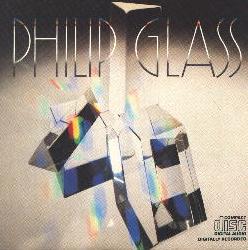

Glassworks, released in 1982, was Glass' first attempt to introduce his music to a more general audience. It includes both solo piano and ensemble pieces, and it was one of his few albums not intended for theatrical performance. It is a great first album for any beginning Glass listener.
The "Opening" of Glassworks
This haunting solo piano piece has the remarkable effect of sounding like several pianos working together in Glass' trademark contrary motion to produce a compelling piece of music. Listening to it over and over again, I began to wonder whether or not the sustained sounds I heard were actually played or simply emerging in my mind from the repeated beats of music. I find it hard to believe that this piece evokes such an array of emotions despite the striking symmetry of musical pattern and plot - or m aybe it is because of the symmetry that it resonates so deeply.
The piece has an unwavering rhythm, but certain notes contain added drag as if longing to stay attached to their surrounding notes. Like Dance II from Dancepieces, Glass relies heavily on cyclic rhythm to produce the composition's complexity. We also hear the emergence of one of the hallmarks of Glass' work: additive process. High, sustained notes are interspersed over the contrary motion arpeggios, adding a completely new mood to the dialogue of the piece. These alternating musical figures eventually converge with the regular, driving rhythmic passage to produce a certain hypnotism that I find incredible dramatic and romantic. With its symmetry, this piece replays the image of a tragic love story with its highs and lows and, most significa ntly, with the rehashing of a pattern that simultaneously adds hope while driving deeper the reality of the loss. As the opening of the album, this composition creates an incredibly intimate space for the listener.
Page author: Kirsten Lodal